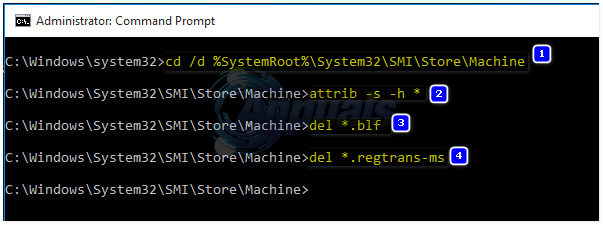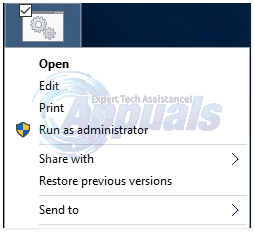FIX: Windows Update Error 0x80071a91
The update stops in the middle and shows error code 0x80071a91, often after restarting or installing updates. This error means that the file system’s transaction manager is not working. The most common reason is a damaged NTFS transaction log.

Other causes include problems with the FSRM service, interference from antivirus programs, or shutting down the computer incorrectly.
1. Reset FSRM
If the transaction log is damaged, Windows can’t manage update files properly. Resetting FSRM (File System Resource Manager) restarts the process that manages these logs, so updates can work again.
- Press the Windows key and type cmd. In the search results, right-click on cmd and choose Run as administrator. When the black command prompt window appears, type the following command and press Enter:
fsutil resource setautoreset true C:\
- Note: C: refers to the drive where Windows is installed.

- Once the command finishes successfully, restart your computer and try running Windows Update again.
2. Delete Common Log File System (CLFS) Transaction Logs
If the CLFS transaction logs are damaged, updates can’t make changes to the system.
Deleting these logs makes Windows create fresh ones, fixing any problems and letting updates work normally again.
- Press the Windows key and type cmd.
- In the search results, right-click on cmd and select Run as administrator.
- In the command prompt window, carefully type the following commands, pressing Enter after each one:
cd /d %SystemRoot%\System32\SMI\Store\Machine attrib -s -h * del *.blf del *.regtrans-ms

- If you see an error saying that some files are in use, restart your computer and try the steps again. If you still can’t delete the files, download Unlocker from this link. After downloading, run the file and install Unlocker.
- Next, press and hold the Windows key, then press R. In the Run dialog box, type %SystemRoot%\System32\SMI\Store\ and press Enter. Right-click on the ‘Machine’ folder and select ‘Unlocker’. If files are in use, select ‘Unlock All’.
- Repeat the command prompt steps above to delete the files.
- Once finished, restart your computer and check whether the issue is resolved.
3. Run the Windows Update Troubleshooter
Some update problems happen because services are set up wrong or there are small errors.
The Windows Update Troubleshooter checks for these issues, fixes them, and puts update settings back to normal.
- Click the following link to download the official troubleshooter: http://go.microsoft.com/?linkid=9830262.
- If you can run/open the file directly, simply click ‘Run/Open.’ If you need to download it first, do so, then run the file.
- In the troubleshooter window, select ‘Windows Update’ and then click ‘Next’.
- Let the troubleshooter automatically detect and fix any problems it finds.
- Restart your computer and check if the error is resolved.
4. Restart Windows Update Services
Windows Update relies on several services, including the BITS service, Windows Update service, and Cryptographic service. If any of them isn’t working properly, update errors like this can appear. It’s best to restart all of them for a clean start.
- Click here to download the windowsupdateservices.bat file, then right-click on it and select ‘Run as Administrator.’

- If the file opens as a text file, save it with a .bat extension. Then, right-click the file and choose ‘Run as Administrator’. Alternatively, you can copy the batch commands and paste them directly into a command prompt (admin).
5. Re-register Windows Update Files
Here, we will re-register both the BITS (Background Intelligent Transfer Service) and Windows Update files. Click here to download the Windows Reg Update file, right-click on it, and choose ‘Run as Administrator’.
6. Rename Corrupt Update Stores
Sometimes, failed updates can trigger this error. Renaming the existing update stores allows Windows to build new ones from scratch, which can fix the problem.
- Press the Windows key to open the Start menu and type ‘cmd’.
- In the search results, right-click on cmd and select Run as Administrator.
- In the command prompt, type each of the following commands separately and press Enter after each one:
ren C:\Windows\SoftwareDistribution SoftwareDistribution.old ren C:\Windows\System32\catroot2 Catroot2.old
- Note: C: is your Windows installation drive.